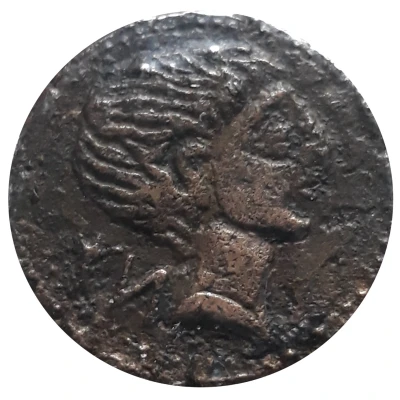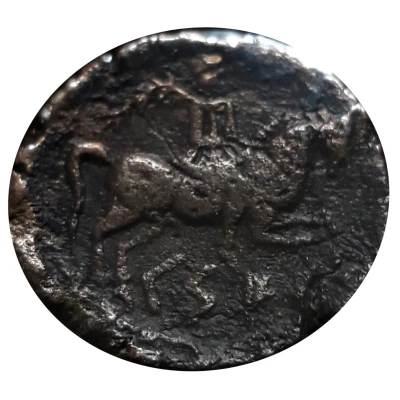


© Jorandm (CC0)
Unit TiKi 100 BC - 40 BC
| Bronze | 8.5 g | 23 mm |
| Issuer | Cessetani people |
|---|---|
| Type | Standard circulation coin |
| Years | 100 BC - 40 BC |
| Value | 1 Unit |
| Currency | Unit (early 1st century BC) |
| Composition | Bronze |
| Weight | 8.5 g |
| Diameter | 23 mm |
| Thickness | 3 mm |
| Shape | Round (irregular) |
| Technique | Hammered |
| Orientation | Coin alignment ↑↓ |
| Demonetized | Yes |
| Updated | 2024-10-10 |
| Numista | N#229561 |
|---|---|
| Rarity index | 95% |
Reverse
Horseman with palm to the right. Below KeSE.
Script: Iberian (Levantine)
Edge
Rough
Comment
Type: Legend TIKIObverse lettering:
"TiKi" written from left to right in northeastern (Levantine) Iberian script.
Reverse lettering:
"KSE" written from left to right in northeastern (Levantine) Iberian script.
66 pieces known according to 1218, page 214.
Interesting fact
The Cessetani people were a tribe that lived in what is now modern-day Spain, and their coin, the TiKi, was used as a form of currency during their time. One interesting fact about the TiKi is that it was made of bronze, which was a significant material at the time, and it weighed 8.5 grams, which was a standard weight for coins of its kind. This coin was used for everyday transactions and was a symbol of the Cessetani people's economic and cultural development.